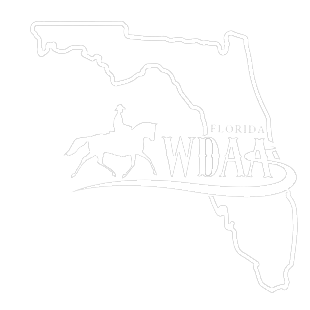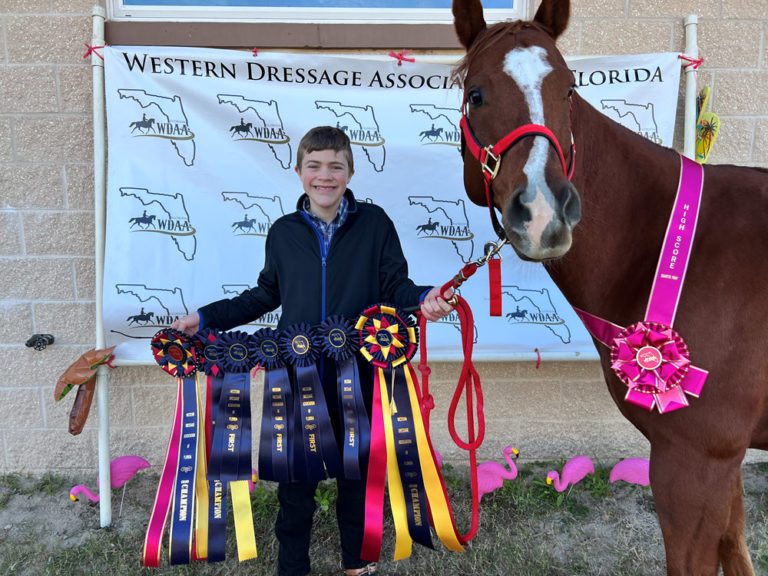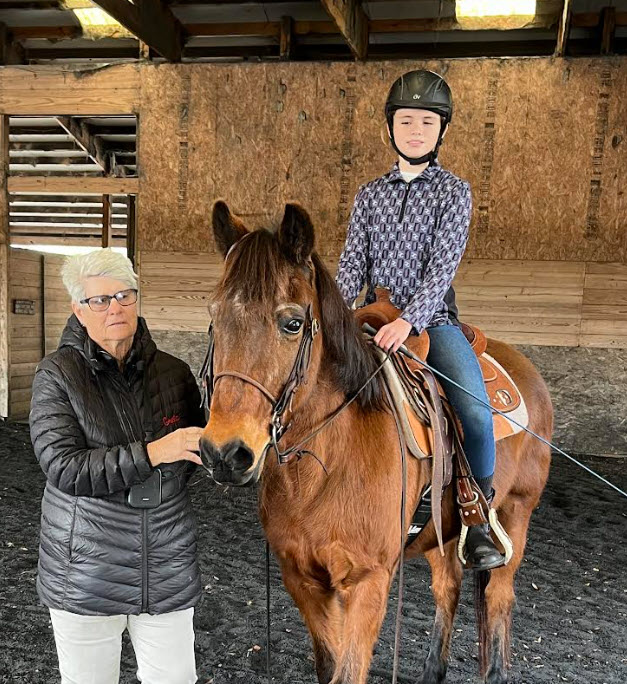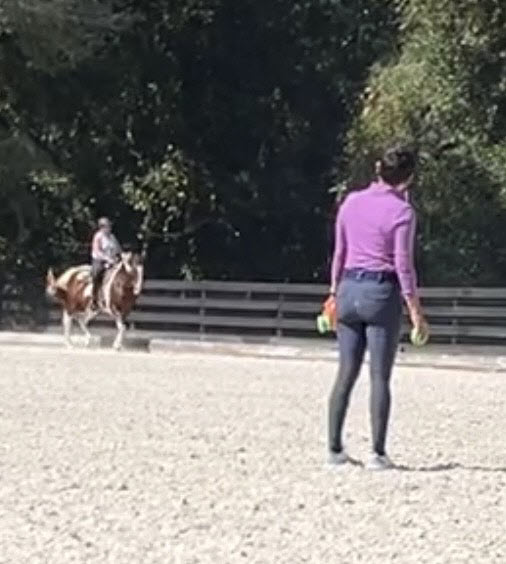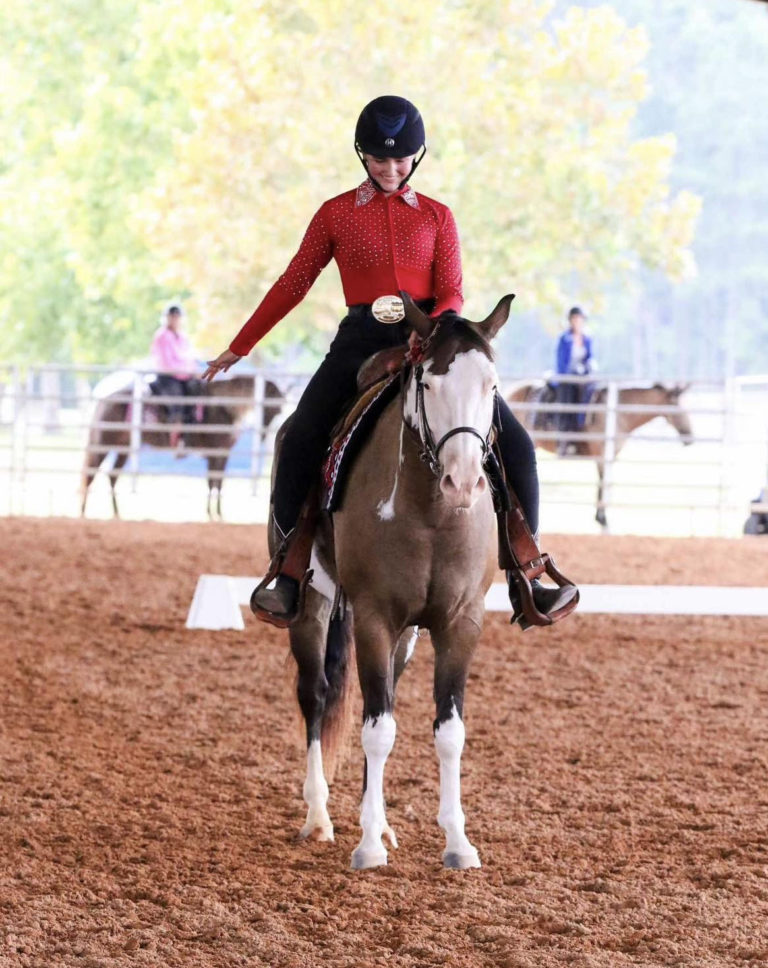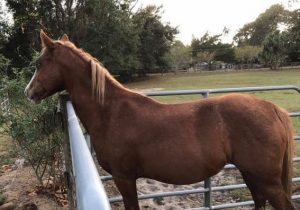
By WDAFL member, Leslie Williams
My start in Western Dressage began a little less than a year ago. Like many rescues, my mare Luna has a heartbreaking past with poor nutrition, a major hip injury, and lack of veterinary and farrier care. In addition, all I knew about Luna’s previous under saddle career consisted of her galloping along dirt roads. However, I was fortunate enough to get in a few trail rides before her colt came and quickly realized she was anything but average. While green, Luna is incredibly intelligent, sane, and willing. While perhaps not ideal, she was safe for me as a rusty amateur. As she was coming back from “maternity leave”, I was looking for a good discipline for her to slowly and safely rebuild her muscles. Thanks to the encouragement of my friends and trainer, I decided to give Western Dressage a try.
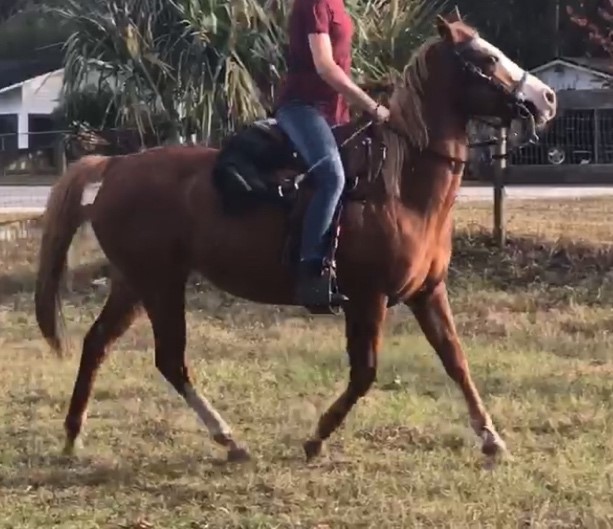
Luna and I went to our first show in November 2017 and had a great time. I appreciated how Western Dressage put an emphasis on scoring based on the horse’s breed standards and the importance of harmony. I knew there was a lot of opportunity for Luna and me to improve. While researching opportunities, I saw the WDAFL grant program and applied. Much to my surprise, I was graciously provided the opportunity to have three lessons over the summer with Stephanie Mosely, “L” graduate with distinction, and biomechanics aficionado. Lessons with Stephanie were game-changing.
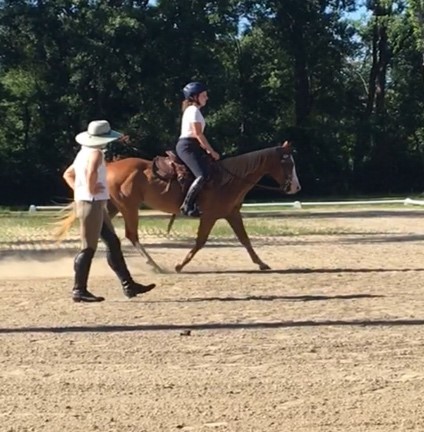
June: In my first lesson, Stephanie instantly noticed my asymmetry and quickly went to work on improving my seat. I immediately felt the impact that had on my balance. So many times we hear that the horse is “just green and unbalanced” and that balance will come with more training. In reality, my lack of balance resulted in Luna and I working against each other. By having me sit centered in the saddle and by bringing my leg underneath me so that I had my head, hip, and heel in alignment, I was able to become more balanced even if it was just for a few strides. In addition, we worked on bringing weight through my thighs and bringing my knees in and down. Finally, we worked on my post tempo to control her speed vs letting her speed control my post. Luna’s quick and huge stride can be jarring so it is important for me to set the tempo. This lesson was hard – my years of inconsistent and casual trail riding had led to some bad habits. However, I was a better and more determined rider after this lesson. My homework for the next month included working on my seat, the tempo of my post, and getting myself adjusted!
July: Unlike my teenage self, I actually did my homework. I got adjusted and noticed a drastic change in my hip which had been out of alignment for nearly 20 years due to a bad fall. By having my hip set correctly, it was more comfortable for me sit centered in the saddle and evenly distribute my weight. I practiced what we had gone over in the last lesson and worked on my transitions to start the trot off at the correct tempo vs. trying to get it after the fact. Then, I had a friend who was generous enough to give me her old western saddle which fit me significantly better than my mom’s. Things were really coming together!
Lesson Two. My seat had improved – hard work had started paying off. While I still was far from perfect, the adjustments this time were less dramatic. Stephanie continued to help me on my tempo at the trot and to get me caught up with Luna. The quality of her gait was changing. In addition, we lightly worked on Luna’s canter, which given her street racing past, can be rather quick, tense, and unbalanced. Stephanie identified that I was being left behind at the canter and was going against Luna. By organizing my body and staying caught up with Luna’s stride, I was able to be in sync with her and ultimately this was less stressful for her. Once I was in sync everything started coming together from halts to her speed. Just like magic. Homework this month? Canter my horse more frequently and keep practicing my transitions, and tempo.
August: I continued to work hard on my seat, my shoulder drop, tempo, and all of my bad habits. Again, not perfect, but I noticed my stamina increasing. Luna and I continued to work at the canter. I also threw in some cross training trail rides which were fun. Luna was loving my synchronization efforts and it wasn’t uncommon for her to be reaching into the bit at the trot or to have quieter downward and upward transitions. With each ride, we were getting better and better.
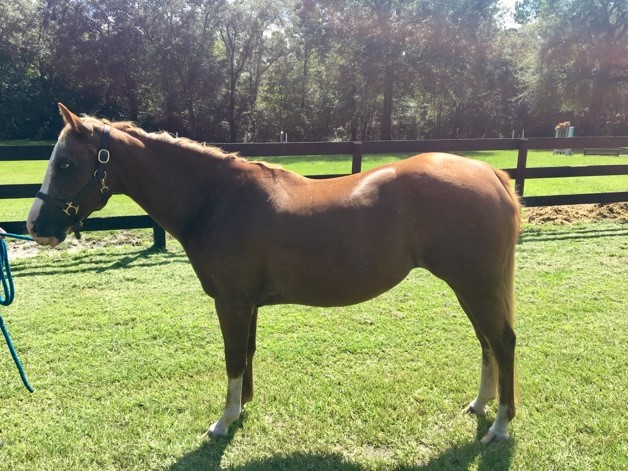
Given all of the things we had been working on this summer, I went to another schooling show and signed up for tests 2-4. During Test 3, Luna (the former queen of hollow), was rounding and reaching into the bit the entire length of one of the change reins! We walked away with a 68.33, 66.75, and 68.04. We got second in tests 2 and 3 and won test 4. These were some of our highest scores to date and approximately 4% points better than our previous average! I made mistakes and they cost us but I am very proud of how hard Luna tried and was encouraged by the judge’s comments.
The next day I had my last of the grant lessons with Stephanie. We talked about my tests and the reoccurring theme in them – needs improvement in corners and with circles. Once again, she gave me a great homework exercise which helped me work on my corners and also helped me with my transitions. We started at the walk, using my inside leg I imagined it being a post and pushing Luna around it. By lifting my hand during this, I also helped give her more balance. This was harder for Luna given her hip injury as she likely has compensated for that for many years. We started the exercise at a walk and Luna quickly caught on and was giving the tiniest amount of bend. Then we started working at the trot, and once again, Luna tried and we started getting the hang of it. This exercise is score changing.
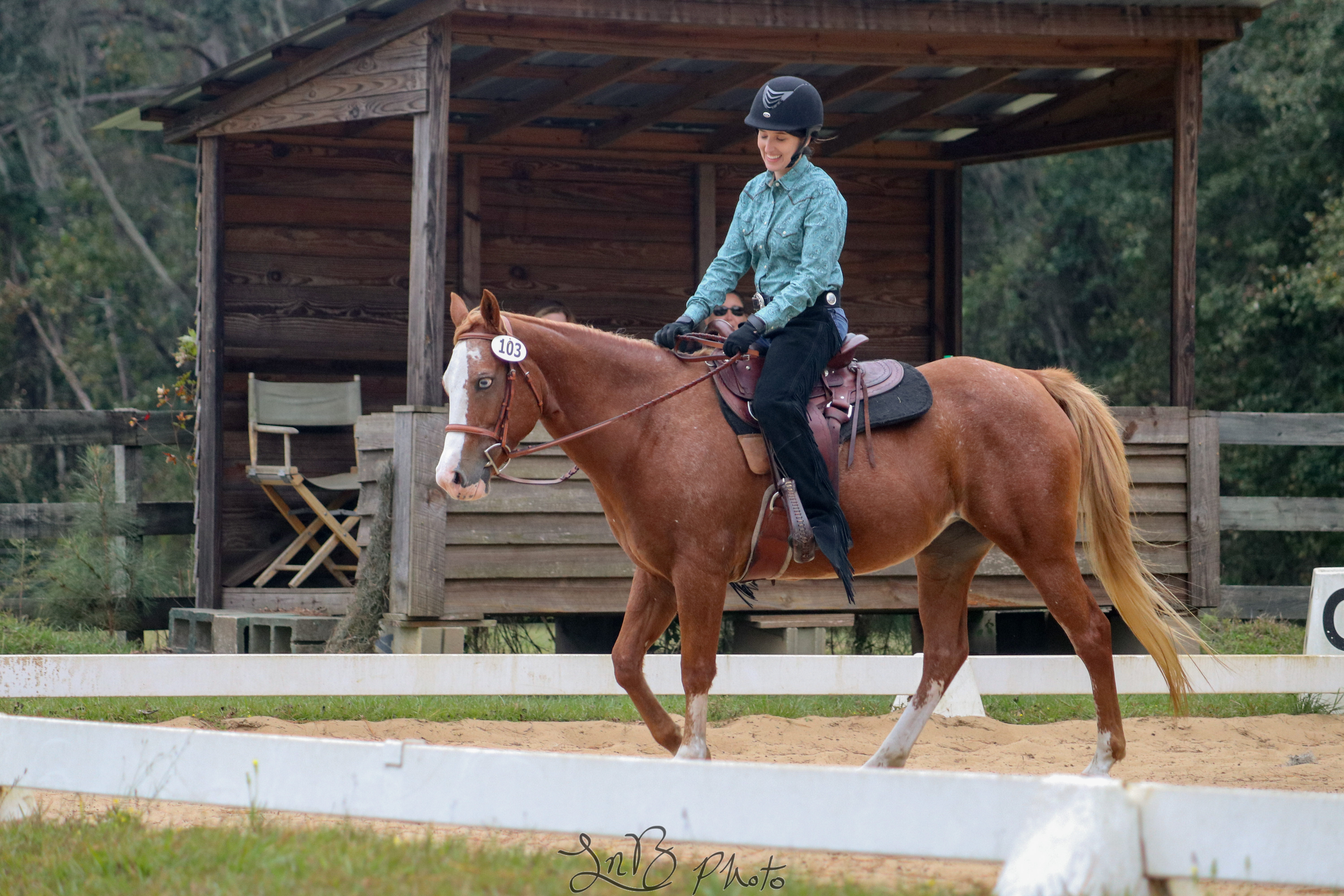 In conclusion, this has been a fantastic summer. I’ve learned a ton which is in little comparison for what Stephanie and Western Dressage have done to transform my horse. I’m so proud of all that we have accomplished and how incredibly strong and fit Luna has become. I realize that Luna’s hip may eventually limit her performance capabilities and that’s okay. Luna is part of the family, and we will continue to train with Stephanie to improve her long-term physical health. For us this journey isn’t about ribbons, it’s about healing Luna’s body and soul, and becoming the best rider I can be.
In conclusion, this has been a fantastic summer. I’ve learned a ton which is in little comparison for what Stephanie and Western Dressage have done to transform my horse. I’m so proud of all that we have accomplished and how incredibly strong and fit Luna has become. I realize that Luna’s hip may eventually limit her performance capabilities and that’s okay. Luna is part of the family, and we will continue to train with Stephanie to improve her long-term physical health. For us this journey isn’t about ribbons, it’s about healing Luna’s body and soul, and becoming the best rider I can be.
